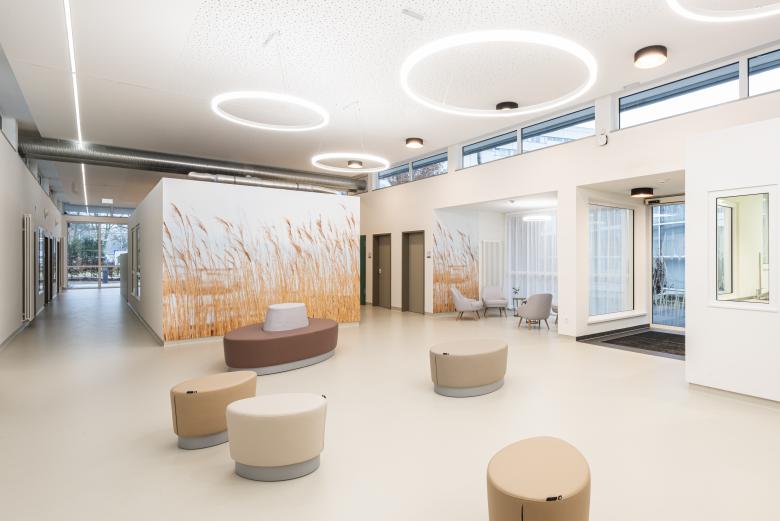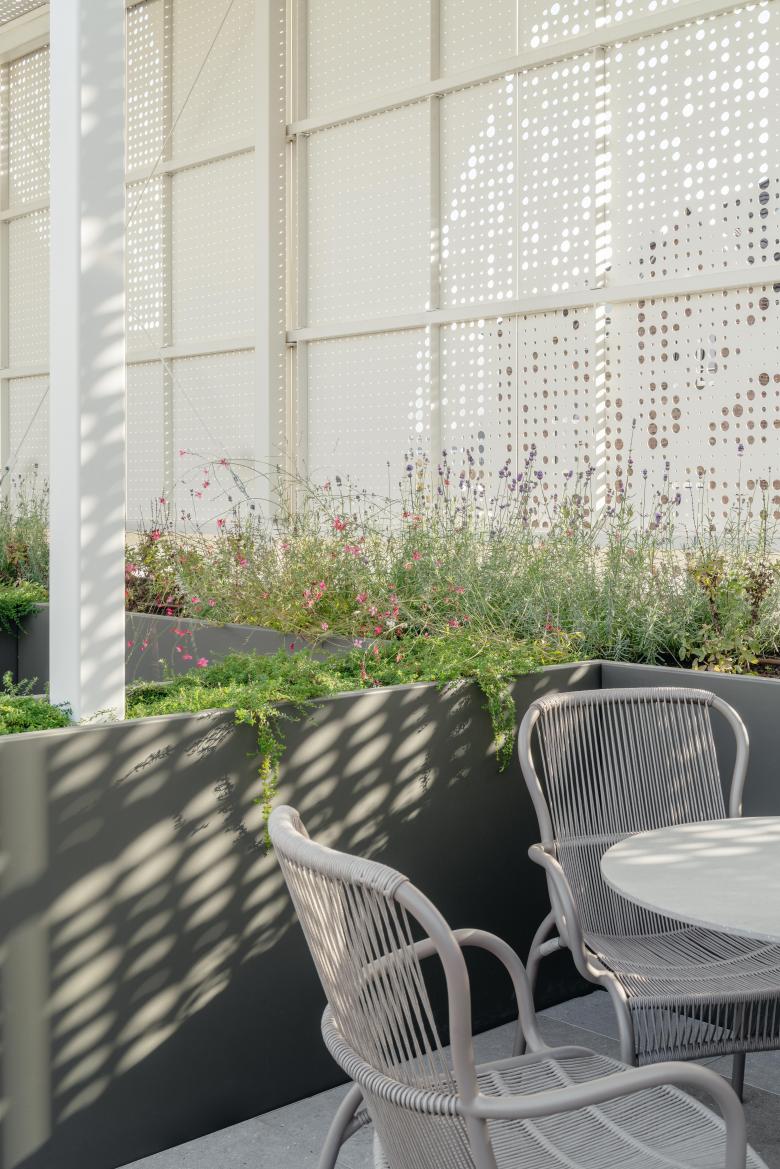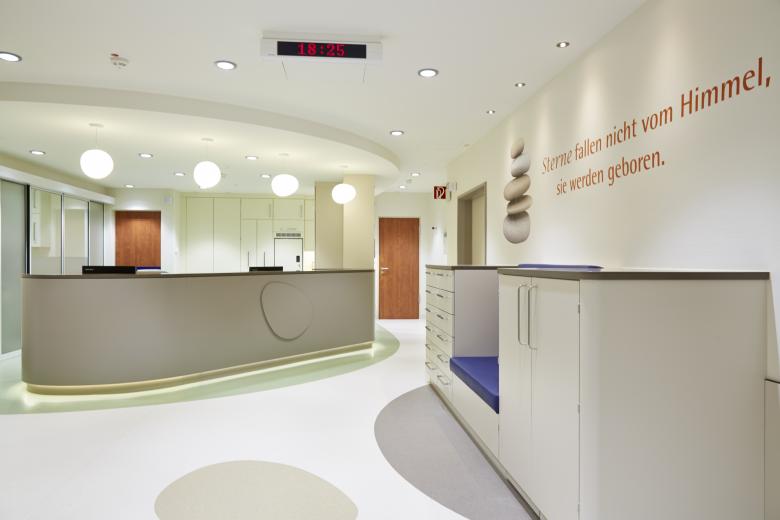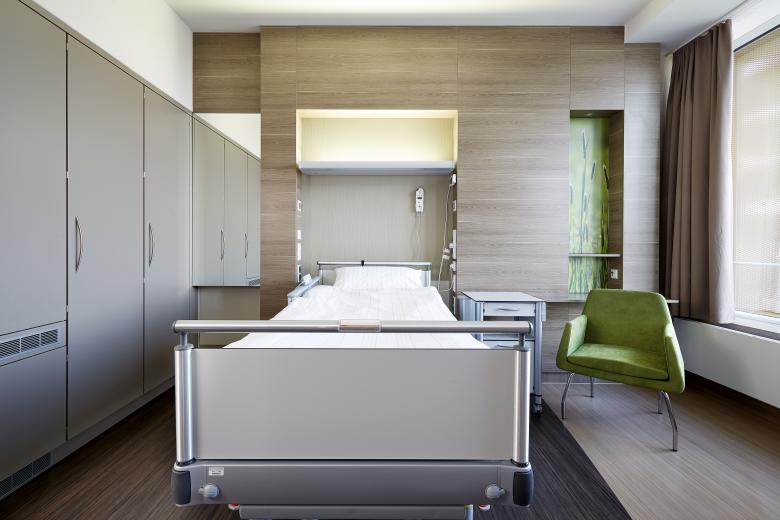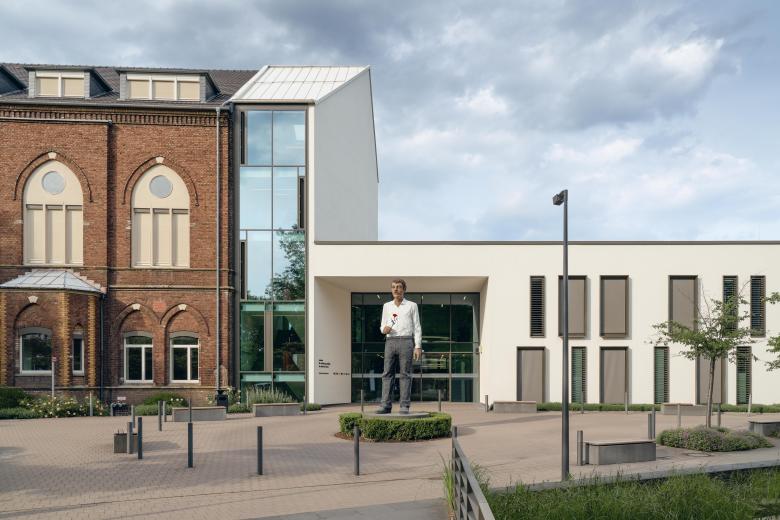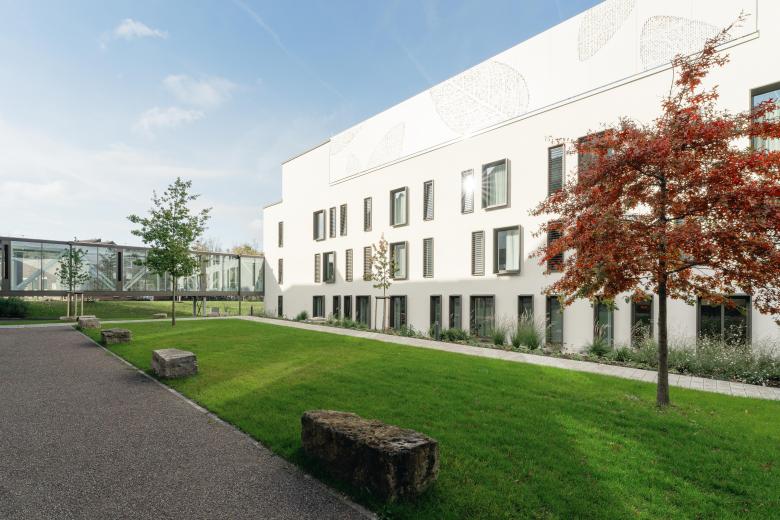In conversation: The path to enhancing the quality of stays in the hospital
Katinka Corts
30. August 2023
Linus Hofrichter (a|sh architekten), Sylvia Leydecker (100% interior) and Boris Augurzky (RWI Essen) in the interview (Illustration: World-Architects)
In the special topic "Healing Architecture", we engage in discussions with important national and international experts about the criteria for creating high-quality environments in healthcare buildings. The topic will focus on the complex healthcare system, including such specialized areas as psychiatry and senior-friendly construction, as well as issues like digitalization and lighting design. In the opening interview, we bring together three key stakeholders: interior architect Sylvia Leydecker, architect Prof. Linus Hofrichter, and business specialist Prof. Dr. Boris Augurzky, who regularly deal with hospital planning and economic aspects in this field from different perspectives.
Katinka Corts: Today we want to talk about a specific topic: the quality of stay in hospitals and how this can be enhanced. But first, I would like to know what key issues and main difficulties you currently see in the field of hospital planning.
Linus Hofrichter: One core issue is that most hospitals are poorly structured due to their historical growth. We rarely build completely new facilities. When we expand and add to existing buildings, it is crucial that people can find their way around. Sick persons seeking healing are often nervous and have a different perception. Architects have been advocating for years that orientation requires (day)light and clear routing. We also encounter these issues in complex new buildings, as they can become as vast and confusing as an airport, where one cannot navigate without clear signage. Precisely because the population is aging, people are becoming more disoriented, and patients are also anxious, this becomes a crucial factor.
Elderly people are moving around these healthcare facilities more and more often, also as outpatients. They come for short visits, may need to return multiple times, and must quickly find the right destinations. This is a huge challenge because this means we have to create order in these large structures.
Additionally, hospitals today are competing for employees, who closely scrutinize the facilities they will be work in. As a result, architecture now takes on a different significance. In the past, the focus was purely on functionality, but now it also involves creating a sense of well-being and enhancing the quality of the working environment. For instance, the new Heart Centre Berlin at Charité, which is being built as a high-rise, will dedicate one floor to the staff, featuring its own rooftop terrace and running track.
Boris Augurzky: Absolutely, I consider this point to be very important as well. In addition to the patient's perspective, the viewpoint of the employees should be taken into much stronger consideration. When we centralize healthcare facilities, the question always arises whether the staff will come along to the newly formed center—after all, we definitely need them.
Sylvia Leydecker: From my perspective as an interior architect, creating a high-quality environment is a key element in establishing a sense of security. We aim to convey emotional security and trust to the patients through the space, because they are naturally anxious and uncertain about what will happen to them. Spaces have a highly communicative component, and their quality is crucial for both the patients and their families, as well as the staff, as they all interact with each other. It's important to me that everyone involved is satisfied and that the focus is on the patients so that they can get well and recover.
Psychiatry of the LVR Clinic in Cologne, designed by 100% interior. View of the security-conveying foyer with a natural quality of stay. (Photo: Karin Hessmann)
Alexius/Josef Hospital in Neuss by a|sh sander.hofrichter architects. The expansion building offers natural and secure outdoor spaces with a high quality of stay. (Photo: Felix Meyer)
In recent years, many good hospitals have already been built with a pronounced focus on the quality of stay. However, most of these are new buildings. Mr. Hofrichter and Mrs. Leydecker, which projects do you find particularly successful?
Linus Hofrichter: Prof. Christine Nickl-Weller has researched the topic of Healing Environment for many years and convincingly implemented these findings in her buildings. But other architects also take this topic very seriously. A successful example is the new Center for Pediatrics and Adolescent Medicine at the Medical Center - University of Freiburg, which will soon be completed. It was designed by the architectural firms Albert Wimmer ZT-GmbH and Architects Collective ZT GmbH from Vienna. For me, this is an excellent example demonstrating that hospital construction offers plenty of room for innovations that benefit both patients and staff. Right from the start, it was stipulated in the specification brief that the building should be particularly child- and parent-friendly, creating a different environment where the child can overcome fears, find its way around the building more easily, and move around according to its capabilities. This may be a little more expensive, but I am convinced that the investment brings significant added value for those affected. The architecture in hospital construction is sometimes better than its reputation, but the challenges are not diminishing.
Sylvia Leydecker: I would refer to the Maggie’s Centres, which also belong to the world of hospitals but are not hospitals. Oncological patients can arrive there in a completely informal manner and find precisely this important quality of stay. They are emotionally supported without any pressure, and they have control over what happens to them. People receive care and attention—a strong humane component that is often missing in regular hospital operations.
Elisabeth Hospital in Essen, Contilia Group. Maternity ward with five delivery rooms, redesigned by 100% interior. (Photo: Reinhard Rosendahl)
Maggie's Centres are a very special concept with interesting approaches, but on a rather small scale. However, when I look at Germany and the German hospitals, I ask myself what possibilities architects and interior architects have if they want to implement these aspects on a large scale.
Linus Hofrichter: We are usually confronted with the challenge that the funds for investments are limited. However, the initial investment for construction is relatively small compared to what the building will cost in operational expenses over ten years. We might be talking about 10% higher construction costs, but sticking to the minimum standards won't get us anywhere. It is crucial that the building is energy-efficient during operation and that it offers intelligent and multifunctional spaces. We spend too much time discussing room schedules, minimum sizes, and the limits of public funding by ministries. Instead, what we need are buildings that are adaptable and do not restrict but rather provide room for innovation.
Boris Augurzky: But that brings us to the core—there are two problems in the hospital sector: The first is dual financing, meaning there is a ministry responsible for the investment, and of course, they want to make it work with as few state funding as possible. However, if the hospital benefits from higher investment in the form of lower operating costs, the federal state, which provides the funding, gains nothing from it. This separation of interests between investment on one side and benefits in operating costs on the other side is problematic and a fundamental mistake that needs to be addressed. The second problem is that if the hospital achieves a higher medical quality, thus better supporting the patient’s healing process, it cannot charge a different per-case rate than if it didn't provide such services. Therefore, we also need a quality-based remuneration system.
Sylvia Leydecker: I also consider it a huge problem that the quality of stay is currently only rewarded in elective services. On the contrary, in standard services, hospitals are not compensated for providing quality of stay within the framework of case-based flat rate payments. In my opinion, this should not be the case. However, I have noticed that the clients in hospital construction have become more open to these issues. Despite the economic pressure, we see good approaches, and things are definitely moving in the right direction.
District Hospital Bergstraße, Heppenheim, designed by 100% interior. View of the brightly lit corridor. (Photo: Markus Bachmann).
Private patient room of the Rems-Murr Hospital, designed by 100% Interior. (Photo: Reinhard Rosendahl)
I find it interesting that in the children's clinic you mentioned, Mr. Hofrichter, the quality of stay was already defined in the specification brief. Are there any specific regulations or building guidelines that promote the implementation of aspects of the quality of stay in the design of healthcare facilities? And where do you see the levers in the German construction industry and the German healthcare system that could make it easier for clients, planning participants, and (construction) policymakers to integrate this topic more strongly into economic and sustainable hospital planning?
Linus Hofrichter: Measuring the quality of stay is difficult, and there is not enough research on this topic. It is also not always easy, as some individuals may feel comfortable in spaces where others do not. We know that healing is slower if all you see is a concrete wall when looking out the window, and you heal better if you look out into greenery. This finding is 40 years old and based on a scientific study.
However, we can feel the positive impact of good quality of stay on people in our projects. We have built a very beautiful psychiatric hospital in Neuss. Since moving to the new building, the staff has been less frequently ill, patients require less medication, and the length of stay has decreased—remarkable for a psychiatric facility. It is known that well-designed buildings contribute to recovery. However, good food and friendly staff also play a significant role. That's why it is so crucial that the overall package is right.
Sylvia Leydecker: That's true, because a nice reception area alone doesn't solve everything. It's difficult to measure, but I also believe that design doesn't fit into a spreadsheet. You can do a lot of research and provide evidence, of course. I use the image of a view out into greenery to give commercially driven executives an understanding of quality of stay. However, I think the biggest lever is actually bringing this quality into buildings over the years, thus having a kind of organic, built study. Working through checklists doesn't guarantee quality in spaces, as previous approaches of this kind have shown.
Successful projects are, in essence, those in which there is a good fit between the planning side and the client. And the more design expertise the client already has, the better the fit. That's why I advocate for designers to be included in executive boards. If you're lucky enough to have someone on the client side who has a certain amount of expertise in this area, you can approach the projects in a completely different way. Hospital construction always involves numerous decisions; it is complex, and one must always keep work processes and functionality in mind. Bringing that together with design expertise helps enormously.
Boris Augurzky: I wouldn't necessarily share the pessimism that measuring the quality of stay is difficult. Even though I don't do research on this, in terms of methodology, this topic is actually no different than other topics we analyze. We work on a project where we measure the digital maturity of a hospital and can thus also compare the outcome variables. By linking this with patient data, we could even see whether the quality improves as well. Alternatively, we can measure the degree of specialization of a hospital and see: the higher it is, the more beneficial it is for medical quality. If a hospital is designed according to interesting architectural criteria that can be mapped on a scale, these aspects become comparable. Ideally, one would also have to combine data from health insurers with these findings. It would be interesting to see if hospitals with a greater focus on design aspects also achieve better outcomes—that would certainly be a powerful study.
Alexius/Josef Hospital. The old and new building are clearly distinguishable. (Photo: Felix Meyer)
Alexius/Josef Hospital. The expansion building presents itself as a distinct architectural structure with a spacious rooftop terrace and is connected to the existing building through a glass corridor. (Photo: Felix Meyer)
Mr. Augurzky, you are a co-author of the annual Hospital Rating Report, and in an interview in 2015, you mentioned that the district hospitals could no longer avoid the question, "How do I get into the future?" Back then, you already mentioned higher insolvency risks for hospitals, with 30% of them having deficits in their annual budgets at the time. You saw possible solutions in forming alliances or even closing down hospitals. Recently, you published the 2023 report, based on data from 2021, covering approximately 70% of the market. You still identify capacity adjustments, structural changes, and personnel shortages as core problems. Has too little progress been made in the past eight years?
Boris Augurzky: In this time, many things have indeed happened, but progress has been slow. Many hospital networks, for example in southern Germany, have undergone changes by consolidating hospitals into large central facilities and, in turn, establishing smaller outpatient services at the previous locations. I am involved in a redesign project in Aalen, where the capacities of three hospitals are planned to be consolidated into a major regional healthcare provider. The discussion process for this began 1.5 years ago, and now, in the summer, the decision for the project could be made. Overall, however, decision-making processes are very slow, which is why it remains an ongoing issue.
We have, however, noticed a change starting in 2017: While in 2015, the economic situation was still the main focus and created pressure to change, today the main problem is the shortage of personnel. Smaller locations can no longer sustain themselves well because they cannot ensure the minimum staffing levels. In a larger hospital, this is easier to achieve.
In the mentioned project, the chairman of the staff council also supported the consolidation of the three locations but at the same time requested that the new building be attractively designed because that would make the staff more likely to accept the change and move as well. One must consider the mobility of healthcare workers when centralizing. The architecture is just as important as the digital offering and process efficiency.
Currently, hospitals have low capacity utilization—since the Covid pandemic, there have been about 13% fewer cases, which seems to be stabilizing at this lower level. As a result, the hospitals need to adjust their capacities to recover. This reduction could be used sensibly. In fact, there could even be a real construction boom in the next ten years if the hospital reform is also supported with investment funds.
So, the fact that hospitals need to adapt is the order of the day. My impression is that during the Covid pandemic, very many people for the first time became concerned with the nursing and staff shortages in German hospitals, and it was also the first time that the conditions and shortcomings there were in the public eye. Mr. Hofrichter, you have been training engineers and business economists in the field of hospital planning at the TH Mittelhessen for a long time. Do you integrate the factor "attractiveness for staff and patients" into your training?
Linus Hofrichter: I do believe that I contribute to getting people interested in these aspects. I teach those who will later become technical managers in hospitals and those who organize operations. This is just as important as training architects. Committed architects usually know how to design attractive spaces. In Switzerland, we are working together with the Basel-based architects Christ & Gantenbein on the core area of the University Hospital Zurich. They are highly respected architects, also internationally, with a great creative drive—but they have never built a hospital before. This shows me that when architects have a pronounced creative drive, plus a good sense of urban planning and façades, and enjoy organizing large structures, a highly functional hospital with short distances, optimized processes emerges that is also very appealing in terms of its architecture and interior architecture.
We are increasingly noticing what Mr. Boris Augurzky said: We have a refurbishment backlog, and for many years, we have focused on too many small and medium-sized hospitals. Sometimes, there are several hospitals with almost identical medical services in close proximity. To get better hospitals with greater attractiveness for patients and employees, this money should have been spent in a more concentrated way to specifically establish medical centers. Instead, two operating theaters were added to one hospital and another had its nursing station expanded—without a holistic approach.
Boris Augurzky: Quality rather than quantity is definitely the key. I'd rather build fewer hospitals but ensure they are done right. Alongside architecture, considerations should also include issues such as energy efficiency and climate neutrality.
Linus Hofrichter: The hospital reform raises hope, and it is encouraging that you, Mr. Augurzky, are now being heard even more and that progress is being made. The association Architekten für Krankenhausbau und Gesundheitswesen AKG (Architects for Hospital Construction and Healthcare) recently issued a statement saying that hospital architects support the proposed healthcare reform and believe that the concentration processes will also bring about an improvement in quality in terms of construction and building design. We believe that what lies ahead of us is a tremendous opportunity to make healthcare in Germany more efficient and to create even better places of healing for all people in our country. An investment program for construction projects needs to be considered to reduce the refurbishment backlog and make the implementation of the concentration processes feasible. However, the money invested will create sustainable added value compared to the piecemeal approach of recent years.
Alexius/Josef Hospital (Photo: Markus Bachmann)
To conclude our conversation, I would like to know your respective assessment, a sort of glimpse into the future: How dependent is the future viability of a hospital today on also focusing on quality of stay in the design?
Linus Hofrichter: Good design and good functionality do not have to contradict each other. Both together are essential for the future of hospitals and are the decisive parameters for the quality of stay.
The right site is also of great importance. For new buildings, a location should be chosen that is well connected and easily accessible by public transport, on foot, by bicycle, and by car. It must also be adaptable to future developments.
As professionals in the construction industry, we have a special responsibility regarding resource consumption. Sustainable building materials are just as important as a carbon-neutral energy supply.
Sylvia Leydecker: Indeed, the topic is complex and will always remain so. However, good design quality is, especially concerning hospitals, which are particularly complex, sustainability in practice. Ultimately, this is also economical. Operating in an unsustainable manner will become uneconomical in the future. I would say: “Thanks to” COVID-19, the healthcare sector has finally become popular! This wasn't the case before, and now we all recognize how immensely important it is to society and how relevant it is for all of us. Therefore, the spaces that belong to it should also be appropriately taken care of.
Boris Augurzky: In addition, competition will always play a role for hospitals. Operators compete with each other for patients and also staff. We talked about Diagnosis-Related Groups (DRG) and that this system is not quality-oriented, which is true. But if we really concentrate the hospital landscape, we'll have more resources available for those that remain. Up to now, investments have been watered down over the broad area: every facility gets a small amount and there's not really enough for any one of them. That's why one of the goals of the hospital reform is to have fewer facilities but make them special places with highly specialized medicine and beautiful architecture.
Thanks for the interesting exchange!
Prof. Linus Hofrichter is the managing director of a|sh architects, honorary professor and freelance architect with over 35 years of experience in planning and constructing hospitals and healthcare buildings. He believes that a good process-oriented workflow benefits everyone in the hospital, including employees and patients. He is particularly dedicated to finding a balance between operational organization and design. For many years, his office has been a pioneer in sustainable building practices.
Sylvia Leydecker is the managing director of 100% interior and considered one of the leading interior architects in the healthcare sector in Germany. She designed the prototype of the Wahlleistungszimmer (optional benefits room) for the PKV (Association of Private Health Insurers) and the Futurecare special exhibition for Bitkom. As an author, she has written books such as Das Patientenzimmer der Zukunft (The Patient Room of the Future), connecting theory and practice. Her projects have received various international awards.
Prof. Dr. Boris Augurzky is the managing director of hcb GmbH, chairman of the board of the Rhön Foundation, Head of the "Health" division at RWI, extraordinary professor at the University of Duisburg-Essen, and a member of various committees and advisory boards, including BMC, IQM, BARMER Institute for Health System Research, WIdO, Council for Health and Medical Ethics of the Diocese of Essen, and the Government Commission "Hospital."

